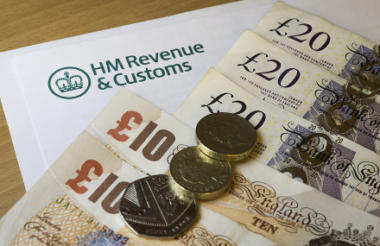For a number of years, a series of creative sector tax reliefs have been available to qualifying companies within the charge to UK corporation tax, with the principal aim of encouraging creative sector investment and production within the UK, while also raising the UK’s profile overseas.
The more established reliefs (film, animation, television and video games) are aimed at commercial entities and are restricted to “British” productions, usually assessed by way of a cultural test administered by the British Film Institute. However, the three newest reliefs (orchestra, theatre, and museums and galleries) have no such requirement, and even overseas performances or exhibitions may qualify, provided at least a quarter of the expenditure is within the EEA and the UK entity remains in control of production. These reliefs are also much more relevant and structured towards not-for-profit entities, including charities.
The reliefs all work in a similar way, which is to allow a tax deduction for qualifying expenditure against the profits of the qualifying trade. This is additional to the usual exemption from corporation tax on profits. These additional deductions can either reduce taxable profits, or where they create losses, be surrendered for a repayable tax credit.
The financial value of these reliefs to qualifying companies can be significant and broadly depends on the level of the “qualifying expenditure”, which has varying criteria but is typically worth up to 20 per cent of such expenditure.
Here are the key features of the three most recently introduced reliefs.
Theatre tax relief (TTR)
- Available since 1 September 2014.
- Can include plays, operas, musicals and ballets, but excludes productions where a main purpose is to advertise goods/services or to make a recording.
- Various other exclusions, including the use of wild animals in any performance.
- Productions must be performed live to paying members of the public or for educational purposes.
- TTR gives an additional 100 per cent deduction on up to 80 per cent of qualifying expenditure.
- Losses can be surrendered for a repayable tax credit at either 20 per cent for non-touring or 25 per cent for touring productions.
- Qualifying costs include the production and closing costs, but not speculative or day-to-day running costs.
- No more than one entity can claim for each production. This must be the company with overall control and responsibility and the criteria for this can result in no eligible entities.
Orchestra tax relief (OTR)
- Available since 1 April 2016.
- Concerts must be performed live by at least 12 instrumentalists in an orchestra, ensemble, group or band.
- No restrictions on type of music, but only minimal electronic amplification allowed.
- Performances must be for paying public or for educational purposes and a main purpose must not be to advertise goods/services or to make a recording.
- OTR gives an additional 100 per cent deduction on up to 80 per cent of qualifying expenditure.
- Losses can be surrendered for a repayable tax credit at a rate of 25 per cent. No distinction between touring and non-touring (unlike TTR).
- Qualifying costs include the creative and productions costs, but not speculative or day-to-day running costs (as for TTR).
- No more than one entity can claim (as for TTR) for each concert. This must be the company with overall control and responsibility, and the criteria for this can result in no eligible entities.
Museums and galleries tax relief (MGTR)
This is the newest of all the creative sector tax reliefs to be introduced. Charities will not be able to make claims until the current Finance Bill is approved by Parliament, but will be able to backdate them to April 2017. Unlike the existing reliefs, MGTR will be exclusively available to non-commercial entities.
- Due to expire April 2022 (unless renewed).
- An exhibition includes a curated, organised collection of objects which are considered to be of scientific, historic, cultural or artistic interest.
- Permanent, temporary and touring exhibitions all eligible, but must be open to the public. The main purpose must not be to advertise goods/services or to sell the contents of the exhibition.
- Allows an additional 100 per cent deduction on up to 80 per cent of qualifying expenditure. Losses can be surrendered for a repayable tax credit at either 20 per cent for nontouring or 25 per cent for touring exhibitions.
- Capped at £500,000 of qualifying expenditure per exhibition – therefore a benefit of up to £80,000 for non-touring and up to £100,000 for touring exhibitions.
- More than one museum will be able to claim on the same exhibition (unlike with TTR and OTR).
- A wide range of charitable / educational bodies are expected to be eligible to claim, for example libraries, archives and historic homes, provided they are run as charitable companies, their subsidiaries, or as a subsidiary of a local authority.
- There is no need for a permanent collection and exhibitions can be held outside of qualifying museums and galleries, for example in parks, schools and prisons.
- Qualifying expenditure will include the creation and development stages of putting on an exhibition, de-installation costs of exhibitions (if open for up to 12 months only), and will exclude costs such as marketing and day-to-day running costs
Louise Verago is NFP tax director at haysmacintyre
Related articles










